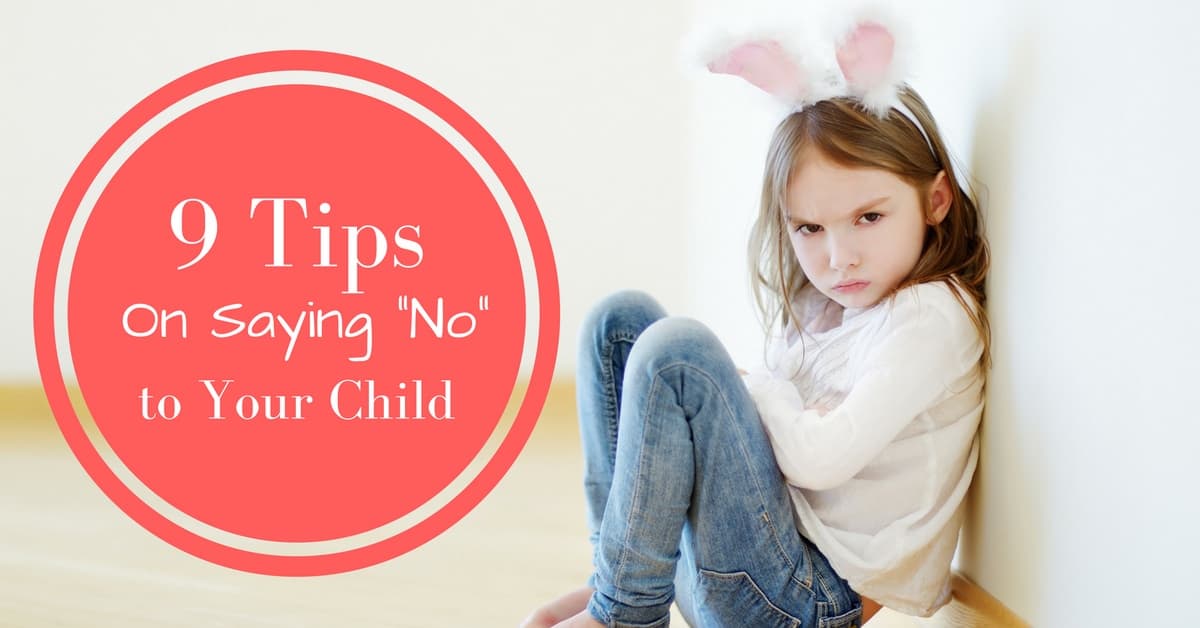
It’s not easy to discipline a child. It can even be heartbreaking. As a parent, you want to see a bright smile on your child’s face, not a sad frown, tears, or the dreaded tantrum. Saying “no” the wrong way can cause long-term damage, but doing it the right way can ultimately make your child happy and give you long-term relief. Here are some effective tips on saying “no.”
Once is Enough
You must be firm in delivering your first “no,” so there is no need to reiterate. Use a serious facial expression and communicate the reasons why your child isn’t getting what they want. If the first “no” doesn’t work, try a different approach, such as finding ways to say “yes.”
It’s a major mistake to relent. If your child learns that they can harass you into a “yes,” they will also learn to manipulate you whenever they want something.
Explain
Sometimes it isn’t enough to say “no.” Children may not understand and are likely to repeat misbehavior unless you explain. The most effective way to say “no” is to give valid reasons your child can comprehend.
“Yes” Can Mean “No”
Children hear “no” too many times, harming their language development and potentially causing resentment. It’s entirely possible to say “yes” while meaning “no.” For example, if your child asks for a cookie, you can reply: “Yes, you can have a cookie after dinner.” If they ask for a new toy while shopping, say: “Yes, if this is what you want for Christmas.” In this way, your child has the opportunity to get what they want on a special day and learns to compromise.
Do Not Shout
Child Development Journal writes, “Yelling at your kids can be just as bad as corporal punishment, and it could cause behavior problems and emotional development issues.” The consequences of yelling at children outweigh any possible benefit of temporarily silencing them. The Journal of Marriage and Family found that yelling can cause depression and self-esteem issues. Thus, it’s vital to learn to communicate calmly and kindly.
Persistent requests are often a form of boredom. Paying attention to your child by engaging in conversation or playing with them can quickly redirect and refocus the topic onto something more positive.
Respect Their Privacy
Don’t embarrass your child in front of other people. Get their attention, go to a private place and clearly communicate your reasons for saying “no.” Your child may resent you if you disrespect them in public, especially if other people make fun of them. Remember, if you embarrass your child in public, they will learn to do the same to you!
Say “No” with an Alternative
Giving alternatives can convince your child that you’re not declining their request. For example: “No, darling, you cannot have candy; you can have an apple instead” offers an alternative and opens the door to an explanation about the health benefits of apples over candy.
Don’t Give False Hopes
Parents often say: “Not now, darling.” If not now, when? If you fail to fulfill your implied promise, your child may start having trust issues. Give a concrete time frame that your child can expect to have their wish granted. For example: “Not now, darling. We will buy that for your birthday.”
Let the Child Choose
Choosing empowers children and makes them feel that their opinions matter. They won’t feel ignored if they get to decide. For example, you can decline a request for candy and ask if there’s a piece of fruit they’d like instead, reminding them of your explanation about the health benefits.
When choosing items such as breakfast cereal, pick a few viable options and allow your child the final decision rather than allowing them to pick from the whole range. Giving permission to choose anything can result in bad selections you’ll have to deny, undermining the importance of their opinion.
Don’t Contradict Your Partner
Sometimes one parent will say “no,” only to see the child approach the other parent for a “yes.” This can cause conflict between parents and create a manipulative habit in your child. You and your partner must communicate—it’s easy to ask whether a decision has already been made.
Saying “no” is difficult. You want to make your children happy. It’s a lot easier, at least at the moment, to cave into their wants. It’s also easier to shout. However, given the long-term adverse effects, it’s imperative that you spend time learning to communicate calmly and effectively.
Best Resource for Parents on Communicating With Children:



